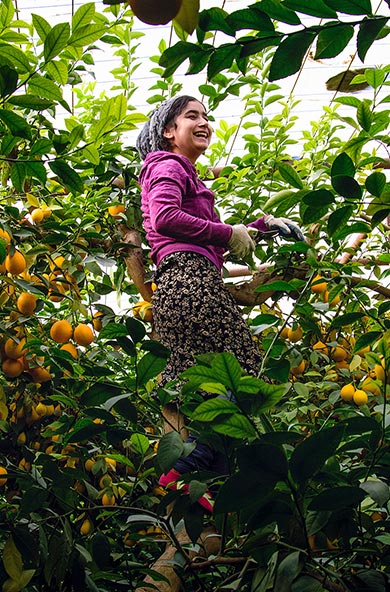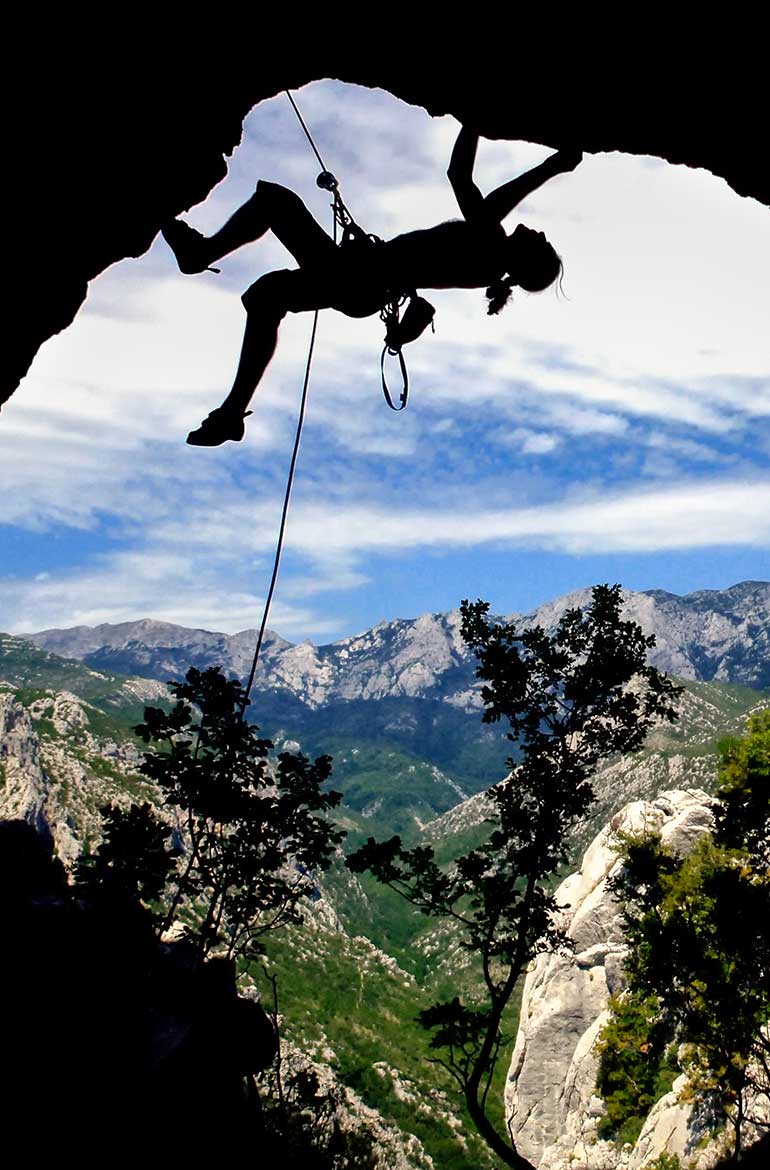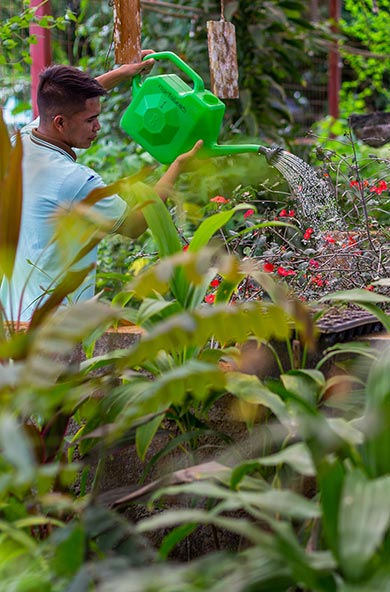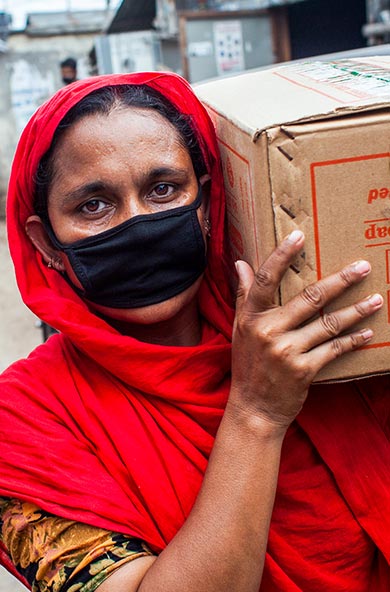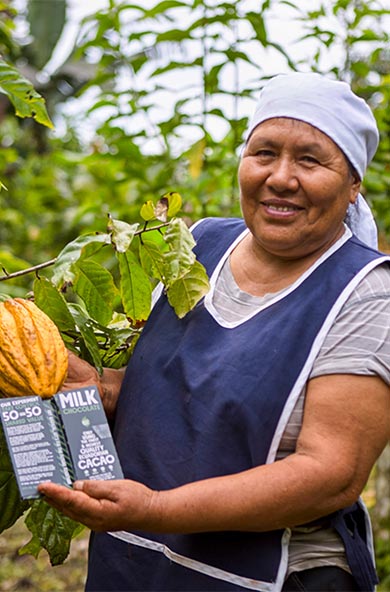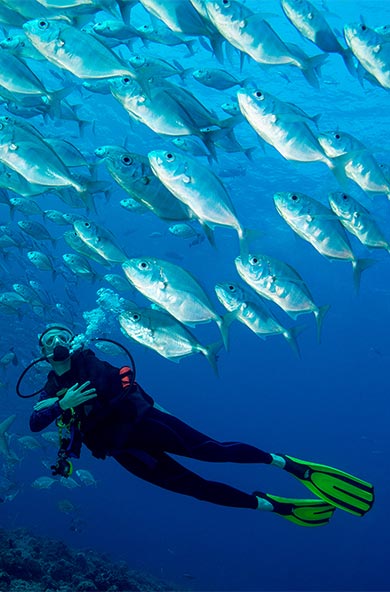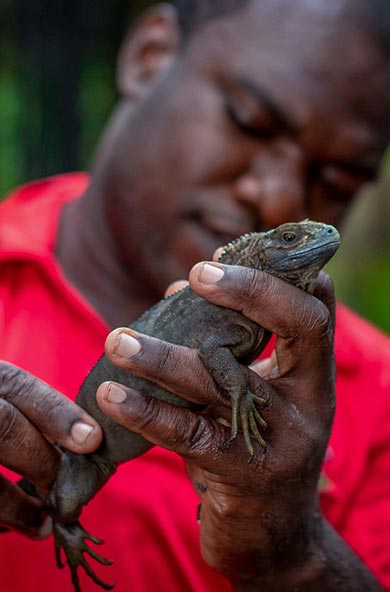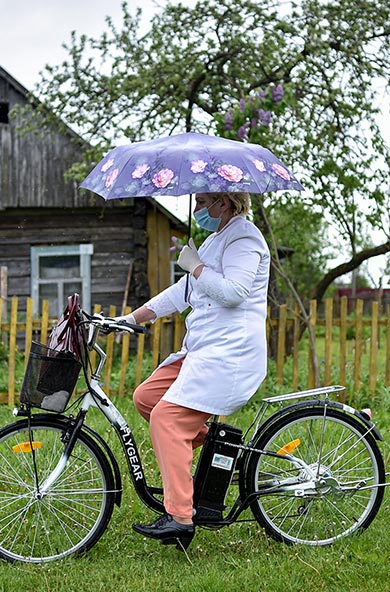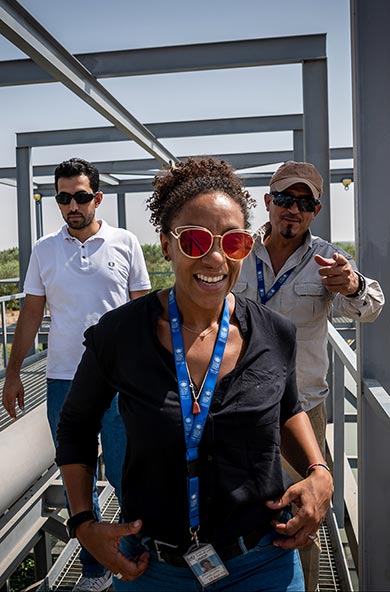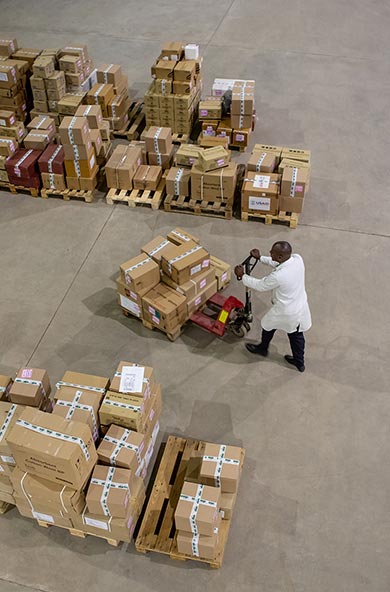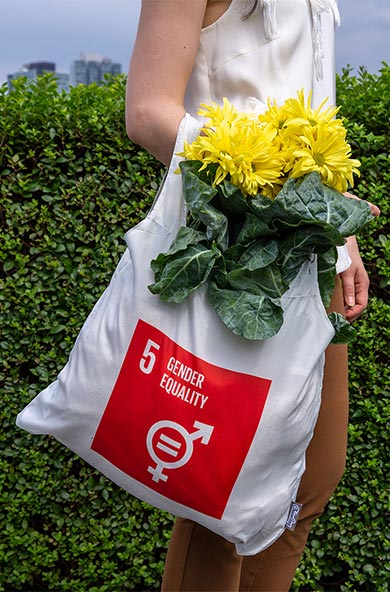As prepared for delivery.
Introduction
- Madam President, Members of the Executive Board, Excellencies, colleagues and friends, welcome to the annual session of the Executive Board in 2021. Today is an opportunity to look back at the year in which a tiny virus humbled the human race and ignited a development emergency.
- Though its impacts were very differently felt, the COVID-19 pandemic was – and continues to be – a uniquely common experience for our generation, with no space for bystanders.
- For the first time in thirty years, global human development tumbled backwards as people fought to save lives and livelihoods. The climate crisis deepened, despite a temporary dip in carbon emissions as the world hit ‘pause’. Some city streets stood empty while, elsewhere, crowds protested against inequality, racism and discrimination, calling for an end – once and for all – to these weapons of oppression.
- Excellencies, the narrative of trauma and disruption that defined 2020 is a deeply shared one. As a result -- and for so many people -- re-living it in 2021 can be exhausting. Because we are not out of the woods.
- COVID-19 variants and surges, such as in South Asia, illustrate that the pandemic remains a real and present development emergency. Fragile and conflict-affected regions will get left behind unless decisive action is taken now. Poverty and unemployment triggered by the pandemic can fuel deep-seated tensions in regions including the Sahel, unpicking the careful progress.
- And vaccine inequity could open a new gulf between ‘the have’s and have nots’. As of mid-May, for example, the majority of African countries had less than 1 per cent of their populations vaccinated. This must change. If logical and moral arguments are not enough, financial arguments may be. According to UNDP research, just 1 per cent of debt service in 2021 would cover the cost of 1 billion vaccine doses under the COVAX initiative. That’s 1 per cent for 1 billion doses.
- At the same time, according to the International Monetary Fund (IMF), wealthy countries could generate an additional $1 trillion in tax revenue as a result of a global vaccination campaign that curbed the pandemic. As we have said together from the outset -- no country is safe until every country is safe. We must find a way forward together. I believe that we can, and we will. Because tragedy, Excellencies, is only half of the story of this pandemic.
- As COVID-19 and its socio-economic impacts spread, local and global actors -- public and private -- teamed up, working together in an unprecedented way to solve epic problems. With the UN and UNDP’s support, they re-organized global supply chains, dismantled barriers to getting government services online, protected jobs, kept people out of poverty, and raced to find a vaccine.
- Excellencies, the pandemic has given the world perspective. And as a result, 2020 was also defined by hope: by what becomes possible when humanity strives to be the best version of itself. That is how UNDP also stepped up in 2020, with your support: a committed development ally, driven, as ever, by a well-founded optimism that humanity can change its future. Working hard as part of the UN family to be the very best version of itself.
Overview
- At the outset, I would like to sincerely thank all the donors and partners who supported UNDP’s work around the world during this period, particularly our top partners and top-10 core contributors who are featured in our 2020 Illustrated Annual Report, while the Governments of Czech Republic, Denmark, Finland, Germany, Israel, Japan and the United States increased their core contributions in 2020. As the Illustrated Annual Report lays out, we would not be here without your strong financial backing.
- In my remarks today I will focus on two things: first, I will look back on UNDP’s performance in this Strategic Plan period, including a snapshot of progress through the COVID-19 pandemic. In doing so, I will speak to highlights from my report on results for 2020 and cumulative progress against the Strategic Plan since 2018. For more details, I encourage you to look closely at that report and the two, complementary background papers we shared: one on UNDP’s COVID-19 response; one on UN Development System reform.
- Second, I will look forward: to UNDP’s next Strategic Plan, as part of our continued and important engagement with you on its development. With your permission, Madam President, I will take each one in turn.
Progress through the pandemic
- During 2020, with the unprecedented pandemic in focus, while progress slowed against our current Strategic Plan, it did not move off track. Repurposing regular and other resources enabled UNDP Country Offices to take swift action, but some original plans – including on disaster risk reduction, national development planning and economic growth – were postponed or adjusted as Government priorities shifted towards crisis mitigation.
- Nonetheless, if I take each of our three outcome areas:
- On poverty eradication, 35 million people got access to the basics they need for a dignified life – like water, food, housing, and health care, and some 27 million people gained access to financial services.
- On structural transformation, 16 million people in 32 countries gained access to justice. 118 countries and 35 partners are now part of the UNDP Climate Promise, the world’s largest offer on enhancing Nationally Determined Contributions in the lead up to the 26th UN Climate Change Conference of the Parties.
- And with nine of UNDP’s 10 largest country programmes in crisis settings, three million people got a job or improved their livelihoods in crisis contexts in 2020, nearly half of them women; while the growing body of UNDP experience, lessons, and results in conflict prevention and in stabilization, such as in Iraq and Libya, is valuable in advancing integrated ways for humanitarian, development, and peace actors to work together.
- To measure UNDP’s 2020 COVID-19 response, new, harmonized outcomes and indicators were developed with the UN Development System and included in our Plan’s results framework. And a COVID-19 marker was created to track all related expenditure, which the public can follow on UNDP’s Transparency Portal.
- It captures that UNDP deployed nearly US$1 billion to over 170 countries and territories through two COVID-19 corporate offers and associated rapid financing mechanisms.
- As the technical lead of the UN’s socio-economic response to the COVID-19 crisis, UNDP led the development of in-country analysis to help 144 countries better identify what action to take. We helped authorities across 82 countries to move essential public services and business continuity online, drawing on the Digital Strategy launched in 2019.
- Indeed, UNDP’s institutional and financial investments made since 2018 like the UNDP Digital Strategy -- alongside the People for 2030 strategy, the Finance Sector Hub, the Global Policy Network, the creation of the Crisis Bureau, and the Accelerator Labs Network, which now covers 115 countries -- made it possible to offer a more coherent, rapid response to the pandemic, alongside UN and other partners.
- UNDP’s global thought leadership on building forward better helped to raise the ambition of global policy responses. This included introducing research on a temporary basic income for all people living in poverty, modelling ‘Sustainable Development Goal (SDG) Push’ scenarios to help governments make policy choices today that have the greatest potential for the future, and launching a new, planetary pressures-adjusted Human Development Index -- part of UNDP’s 30th anniversary look at “The Next Frontier: Human Development and the Anthropocene.”
- Excellencies, UNDP’s COVID-19 response was an integral part of delivering on our Strategic Plan last year because the Plan was designed to enable UNDP to respond to countries’ long-term goals and urgent needs in times of crisis.
- Behind the results achieved are the day-to-day stories and determination of the millions of people with whom UNDP works. People like 25-year-old Khowla in Somalia, who runs an Alternative Dispute Resolution Centre and mediates community disagreements on everything from land theft to domestic violence. Or Bijou Longenge Mpako, Chief Logistician of the Kokolopori Bonobo Reserve in the Congo Basin, where the community protects the great apes and empowers local people, showing how humanity can live in harmony with the planet.
- The stories of mothers and daughters like Lidia María Madrigal Loria and Heimy Arguedas Madrigal, whose ‘stingless bees’ honey business in Costa Rica makes women’s roles as agents of change more visible. And of sons like 13-year old Wajalad from Iraq, who attends a repaired school that was shattered by war and dreams of being a doctor like his father.
- Their stories intertwined with those of our UNDP teams’ in a very personal way in 2020. In nearly universally difficult times, where colleagues amongst us lost friends and family members, where people were separated, schools closed and lives up-ended, our teams proved that the UN – that UNDP -- is there when it matters most.
Key observations
- The report you have received sets out a series of observations on our overall performance since 2018. I will focus on three, namely on UNDP’s integrated support to the pursuit of the SDGs; on the importance of agile financing; and on organizational learning, accountability and transparency.
The Sustainable Development Goals
- First, on the SDGs. The Goals compel UNDP to be better at helping to solve big, systemic challenges, like this pandemic. UNDP is getting there, and with your support, we can do more.
- Since 2018, within a repositioned UN Development System and guided by the QCPR, UNDP has worked with over half of all countries in the world to integrate the Goals into their development plans and accelerate systemic change.
- In 2020, for example, we launched the COVID-19 Data Futures Platform to aid countries’ strategic decision-making; delivered customized SDG integration support to tackle systemic issues -- depopulation in Serbia; reviving the Aral Sea region of Uzbekistan.
- We focused on SDG finance, not just on the quantum of development resources available, but on the way investments flow and are prioritized, developing practical measures to leverage SDG-aligned investment, as we did recently in supporting some $5 billion of SDG-aligned bonds issued by the New Development Bank, Indonesia and Mexico.
- And we are calling for new mechanisms to address the crushing debt that countries face as they try to build forward greener and better. That includes mechanisms such as “debt for nature” swaps, which could help to align COVID-19 recovery financing with SDG financing.
- This is a central objective of the Integrated National Financing Frameworks (INFFs), which the UN is helping to develop and implement in 71 countries -- thanks to support from the Joint SDG Fund, and in cooperation with partners including the European Union and the IMF. South Sudan, for example, is using the INFF process to strengthen national peace and planning dialogues and promote gender budgeting. Cabo Verde is using INFFs to develop a blue economy platform with the stock exchange.
- At the same time, UNDP is deepening its engagement in international policy on development financing. We are delighted and committed to serving as the secretariat for the G20 Sustainable Financing Working Group, for example, co-chaired by China and the United States.
- Excellencies, we know that the SDGs are off track, and that now, COVID-19 has triggered the largest economic contraction since the Great Depression. We know this is set to compound poverty and inequality. Indeed, UNDP research estimates that that eight out of every ten people that could become poor by the end of this decade as a result of the pandemic will live in countries with low or medium human development.
- Yet, an SDG push now – within the next 18 months – combining bold policy choices and integrated, systemic investments in governance, social protection, digitalization, and the green economy -- is possible and it could be a game-changer.
- UNDP is already working with our sister entities towards this end: with UNEP, UNCTAD, ILO and FAO on a green recovery framework; with UNICEF and WHO on an equitable, sustainable COVID-19 vaccine rollout, with UN Women to track and advocate for women’s leadership in building forward better. And an SDG push will therefore be central to UNDP’s next Strategic Plan.
Agile financing
- Second, on the importance of agile financing. Agility saw UNDP through the COVID-19 crisis, and agility requires investment and flexible funding. Though core contributions increased in 2020, UNDP’s financial base is still tenuous, as recently noted by the Independent Evaluation Office (IEO).
- Our dependency on highly earmarked resources challenges UNDP’s ability to respond to countries’ development needs. With a balanced budget for the fourth year in a row, increased productivity and reduced costs, UNDP continues to do more with less.
- For example, UNDP teams achieved $4.5 billion in programme delivery in 2020, the second highest rate in six years. And as a result of intensive efforts to increase productivity and strengthen institutional performance since 2018, three cents more per dollar now goes to UNDP’s development programmes and services, with steps to continuously improve institutional performance underway.
- However, without sufficient, flexible, and predicable financing, we will increasingly struggle to deliver on the ambition of Member States, to ensure a working environment that is safe and inclusive for all our personnel, and to meet the high standards we set on oversight and accountability.
- I call on your support, Excellencies, to live up to the terms of the UN Secretary General’s Funding Compact, such that UNDP and its sister entities across the UN Development System can play their full role, now, in an accelerated SDG push.
Learning, transparency, and accountability
- Which brings me to a third point, on learning, transparency, and accountability. Keeping up with the speed of change today requires a commitment to constant learning, change and renewal. This is central to #NextGenUNDP.
- Following the insight gained from the Strategic Plan Mid-Term Evaluation, for example, UNDP turned around its performance on social protection just when it was most needed, with progress moving from “red” to “green” in UNDP’s results framework.
- And we continue to learn and improve in other areas. For example, we know that UNDP gender work is strong and growing: since 2018, UNDP doubled its partnerships to address discriminatory gender and social norms, and to advance gender-responsive social protection, and in 2020, we rapidly expanded support to tackle gender-based violence.
- But we also know that in crisis and conflict zones, women’s leadership needs more attention. Our progress in this difficult area faltered in 2020, and action is underway to address this.
- Madam President, Excellencies, a UNDP that is ‘striving to be the best version of itself’ requires that we commit fully to transparency and accountability. Our track record from 2018 demonstrates that we have. In 2020, we were again rated by the Aid Transparency Index as the most transparent of United Nations agencies.
- UNDP received its 15th consecutive unqualified audit opinion for 2019 and, for the first time in 10 years, closed all audit recommendations outstanding for more than 18 months.
- And we continue to strengthen internal oversight control systems, learning lessons from audits and evaluations -- including related to Global Environment Facility-funded projects, which identified risks and shortcomings that we are addressing with a series of far-reaching measures.
- Sixty-eight per cent of the OAI audit management actions related to UNDP’s role with the Global Environment Facility (GEF) are now complete, as verified by OAI, and the balance are underway. For example, we will be rolling out a new policy for anti-money laundering and countering the financing of terrorism and working to ensure an appropriate firewall between UNDP’s oversight and execution functions in all UNDP bureaus and units, including our Country Offices.
- Indeed, our Country Offices are where all the systems refinements that we are currently making need to land effectively. While enhancing the capacity of our teams on the ground is therefore a priority -- for example, 800 staff were trained in Managing Successful Programmes certification in 2020 – sustained improvements will take time to be realized.
- Meanwhile, the quality of decentralized evaluations is improving. UNDP saw a 10 per cent increase since 2019 in the number of decentralized evaluations rated as satisfactory or moderately satisfactory. However, we have embarked, together with IEO, on a review of our decentralized evaluation approach, following on from the recommendations of the Management Accountability Review Panel that I established in late 2020.
- For UNDP to continue to support programme countries, including through the GEF and Green Climate Fund, we will need to find the right balance between ensuring development effectiveness and oversight and covering the costs of doing so. I do not believe that our current financial model strikes this balance, yet. Therefore, we are exploring further what sustainable support to countries could look like. The new Strategic Plan provides an important opportunity to move in that direction,
- These, Excellencies, are the building blocks we need for UNDP to become a more agile, anticipatory organization in the face of uncertainty. Drawing lessons from all we have learned since 2018, including a uniquely demanding 2020, let us look forward, then, to the next four years.
UNDP’s Strategic Plan, 2022 – 2025
- Madam President, Excellencies, right now, in June 2021, we have arrived at a moment of choice. Either the world comes together to plough and plant for the SDGs; to build forward better together from COVID-19 towards a green, inclusive economy at a pace we had not imagined possible before, demonstrating the true purpose and potential of international collaboration. Or we don’t.
- Either we prove that we are nations united, or we become nations untied. This is an indisputable moment of choice, in which there is no space for scepticism, dulled consciousness, or silent witness. It is time to pursue our common agenda, and we must each play our part. With your help, UNDP will do so through its new Strategic Plan, 2022 – 2025.
- Through it, within a reshaped UN Development System, UNDP will scale up and accelerate progress towards the Global Goals, working with countries to expand people’s choices for a fairer, sustainable future.
Our ambition
- Our ambition includes helping 100 million people to escape multidimensional poverty through expanding opportunities and capabilities; supporting access to clean energy for 500 million people through investing in distributed renewable energy; and promoting the investment of $250 billion of public expenditure and $1 trillion of private capital in the SDGs.
- We will look for synergies between countries with shared interests, drawing on lessons from our “Rising up for SIDS” offer, which supports island states’ progress on the SAMOA Pathway and towards the 2030 Agenda. In conflict and crisis contexts like in the Sahel, where needs are estimated at $5.6 billion over the next four years, we will foster a more coherent approach across humanitarian, development and peace actors. We aim to diversify and strengthen partnerships across all our work, leveraging new voices, assets and skills in support of the SDGs.
Directions of change
- The Plan will set out how UNDP will support countries in working towards what we see as three major directions of change, with poverty eradication at their core:
- Structural transformation, particularly the transition to green, inclusive and digital economies and societies;
- Leaving no-one behind: a rights-based approach centered on human agency and human development;
- Building resilience: strengthening systems to respond to different risks, ranging from crisis and conflict to natural disasters, health or economic shocks
- These three directions of change are interdependent. They require integrated solutions, that address systems as a whole, that build institutional resilience and dynamic capabilities that can adapt to uncertainty.
- So, while UNDP will continue to work across our current six signature solutions, we will concentrate on those areas where signature solutions intersect or are applied in integrated ways, like the Climate Promise. That is where our partners can find greater value, and the potential for systems transformation.
Signature solutions
- UNDP’s signature solutions – on poverty, governance, resilience, environment, energy and gender - will remain at the core of what we offer, because these are the areas where we see the greatest demand from our partner countries, and where UNDP’s capacities and role within the UN system best equip us to work.
- We are adapting the signature solutions to be even more responsive to country needs, raising the level of our ambition, exploiting the synergies across areas. Our commitment to values, to human rights and to the inter-governmentally agreed governance principles of accountability, inclusion and effectiveness underpin everything we do.
Accelerators of impact
- UNDP’s signature solutions’ impact will be further enhanced by three powerful accelerators:
- Strategic innovation: as development challenges grow ever more complex, UNDP will work alongside our partners to “solve the puzzles” of development rather than looking for one-off solutions.
- Digitalisation: Demand for digital support UNDP surged significantly since the beginning of the pandemic, with support requested by at least 74 countries. Having invested substantially in developing our digital skills and support infrastructure, we are now building the necessary mindset and capabilities across the organization to a) drive digitally informed programming across all thematic areas; and b) make UNDP more efficient, effective and data driven.
- Development financing: few capital flows, public or private, are well-aligned with the SDGs. UNDP will continue to work with governments and financial institutions to put the SDGs at the heart of financial and policy decisions.
- UNDP has for decades offered its partners a combination of deep local experience with global reach. Our support at country level will remain tailored to the specific needs of regions, cities, communities or groups. This is complemented by an understanding of the needs and contexts of groups of countries, like LDCs, LLDCs, MICs and countries in special circumstances, in line with the QCPR recommendation for a more differentiated approach to country contexts.
A revitalized business model
- The future is uncertain. We need to build a more agile and anticipatory UNDP, one that provides the best possible support to our partners in preparing for different possible futures.
- As I have already set out, UNDP has made progress in this direction, investing in new ways of working outlined in the current Strategic Plan. Now we are intensifying these efforts, investing in six key areas of our business model:
- People: Implementing our People for 2030 strategy, to build the skills and talent of the future.
- Knowledge: better co-creating, managing and deploying our knowledge and data to strengthen programming and thought leadership.
- Risk management: building a dynamic risk management system that encourages innovation for stronger development results while proactively managing risks and maintaining the highest standards of transparency and operational effectiveness.
- Funding: developing by the mid-point of this new Strategic Plan period a funding model that more closely aligns our resources with today’s development priorities, and allows UNDP to respond to rapidly changing demand, as envisaged by the Funding Compact.
- Operational excellence: reviewing operational procedures and instruments to be more agile, effective and accountable, including new financial instruments and a greater variety of operational modalities that are suited to more diverse partnerships. For example, more flexible thresholds will be set for launching exploratory or experimental collaboration, especially with the private sector.
- Impact measurement: building systems of monitoring, evaluation and results measurement that can track transformative change over longer time spans and are better suited to new ways of working.
- Investing in all these changes will help deliver the “Country Office of the future”, embedded in the UN Development System, equipped with the flexible resources, skills and access to best practice our partners expect; an office that embraces complexity, actively manages risk and seeks to learn alongside delivering results.
Shared goals, collective effort
- UNDP cannot achieve these goals alone. Working in partnership with others is integral to everything we do. The development of this new Strategic Plan draws on the collective intelligence of many partners, governments and thought leaders with whom we consulted about UNDP’s future. We much appreciate your input.
- Looking ahead, we will continue to strengthen our partnerships across the UN system, collaborating towards more coherent action and stronger results, as the UN Development System reforms intend. We will expand our reach to build new, more diverse partnerships, including with civil society and the private sector, with an approach that sees people as agents of change, not as ‘beneficiaries’; as critical actors in their societies, who will determine the direction of their own development.
- Madam President, Excellencies, we may tire of saying it, but we are living in extraordinary times, so we must take extraordinary steps.
- The chaos a tiny virus can cause is not new. Nor, even, is the speed at which it can travel, unprecedented. The so-called ‘Black Death’ of the 14th Century took nearly twenty years to travel across Asia, Europe and North Africa and to claim up to 200 million lives. But it took only months for a virulent strain of the flu to travel from the front lines of World War I in 1918 through its global supply chains. A full third of the global population came down with that virus.
- What is new is the extent of our ability to do something about it. As UNDP’s 2020 Human Development Report set out, we are the first generation to live in an age defined by human choice, where the dominant risk to our own survival is ourselves.
- At UNDP, through this Strategic Plan and the next, we choose to enhance human capabilities and expand people’s opportunities such that people and planet not just survive but thrive together, where life is not just ‘sustained’ or ‘sustainable’ but where it can flourish. We cannot deliver on this ambition without you. Thank you.

 Locations
Locations